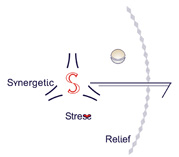Poverty, bad habits in nutrition, and increased consumption of alcoholic beverages and smoking are specified as the main causes of a high mortality rate in the region. Three times higher mortality rate due to heart diseases, compared to EU.
The European Centre of Health in the Societies in Transition, SEE report, July 2003
Health awareness in Serbia is unsatisfactory. Employees neglect their health-related needs more then others. The therapeutic quality of a doctor-patient relationship is seriously compromised. The role of doctors is controversial; their work is highly ineffective in the fields of health promotion and prevention. The huge and growing health-related needs of the Serbian population remain largely unattended.
B. Potter/P. Stankovic, a report to the Foreign Investors Council Board of Directors in Serbia, September 2005
As a contrast to the above, the surplus of young unemployed doctors will increase from 1.500 in 2004 to 5.500 by 2020.
Serbian Minister of Health, official estimate, April 2004
Most of the people, including doctors, believe that stress is the main cause of the increased illness rates in Serbia. Official statistics indicates that sedatives are the most frequently prescribed medicines in Serbia, and on the rise for quite some time now. Addiction inducing tranquillisers were behind the counter drug in Serbia until summer 2002, subject to indiscriminate use by the stressed nation. Despite the official ban, they can still be obtained in pharmacies without prescription.
Nearly one half of the Serbian population recognises symptoms of depression. Mental and emotional health disorders are on the rise, but majority of the sufferers never asks for help/treatment. A visit to a mental health specialist is not socially acceptable to majority of the population, and is often stigmatised in this society. Hence, the high levels of psychoactive substance abuse in all segments of the population.
The health awareness and lifestyle profile of an employee in Serbia are bound to inflict severe health- and productivity-related financial and other losses.
3.
Legal Framework
Prevention of work-related stress is a legal obligation in the EU. The SSR Programme is in line with the European Commission’s Guidance on WRS, and complementary to fulfilment of employers’ duty to develop ‘a coherent overall prevention policy’.
Serbian labour legislation on safety and health is very clear about employer’s duties to assess workplace risks, introduce preventive measures, and monitor health condition of the employees. The penalties that go up to 12.000 Euros are not applied, yet. There is a deadline for employers in Serbia to assess workplace risks by 2nd of September 2007.
4. Holistic Integrative Programming
The SSR Programme takes into account particularities of Serbia, as a transition country, post-war, post-authoritarian (and post-communist) society with widespread anomalies. These particularities contribute to political tensions, uncertainty and instability on the one hand, and absence of timely, acceptable and effective measures for improvement of conditions in the most demanding domains of society on the other.
Thus, priority and full attention are given to the health and well-being needs of an individual that significantly determine the quality of life, as well as to dealing with stress-related aspects involved. The HIP methodology (Holistic Integrative Programming) was applied for design, planning, steering and implementation of SSR projects, so far.
5. Comprehensive Holistic Solution
 Problem outline Problem outline
1) high stress levels in population; 2) poor health awareness & lifestyles in majority of population; 3) huge needs, but, inadequate prevention and treatment options for stress and mental health in general; 4) health professionals-related disadvantages and anomalies; 5) very selective rule of law; 6) large vulnerable population; 7) non-productive workforce, non-competitive economy; 8) education system non-responding to employment market needs; 9) limited financial resources; 10) fragmented sectors of society; etc.
It is obvious that huge health/stress-related needs of the majority of population in Serbia are unattended. Contrary to this reality, we see a growing army of unemployed doctors; 1.500 of them in 2004, 5.500 by 2020.
 Solution outline Solution outline
Our intention is to train unemployed doctors, young graduates, to become the SSR Programme instructors. They face long-term unemployment, and for many of them there will be no place in the Serbian health sector.
Our plan is to create new possibilities for their engagement outside of health sector, to start with. We are in the final stage of positioning the SSR Programme services in the recreation sector, with selected fitness & wellness providers in Belgrade. Few other options are being prepared, too, to unfold when appropriate.
6. Funding and Co-Operation
Funding will be essential to train sufficient number of SSR Programme instructors, eventually. This is very complex issue that needs adequate strategic approach – which is not an easy task to accomplish with the stakeholders from Serbia. We encourage international community stakeholders and funding entities to approach us directly to discuss common interests and modalities of co-operation in the fields of stress management and health promotion.
Back to top
© 2007 Brian Potter and Predrag Stankovic
graphic design by P & T Visuallies © 2007 |

